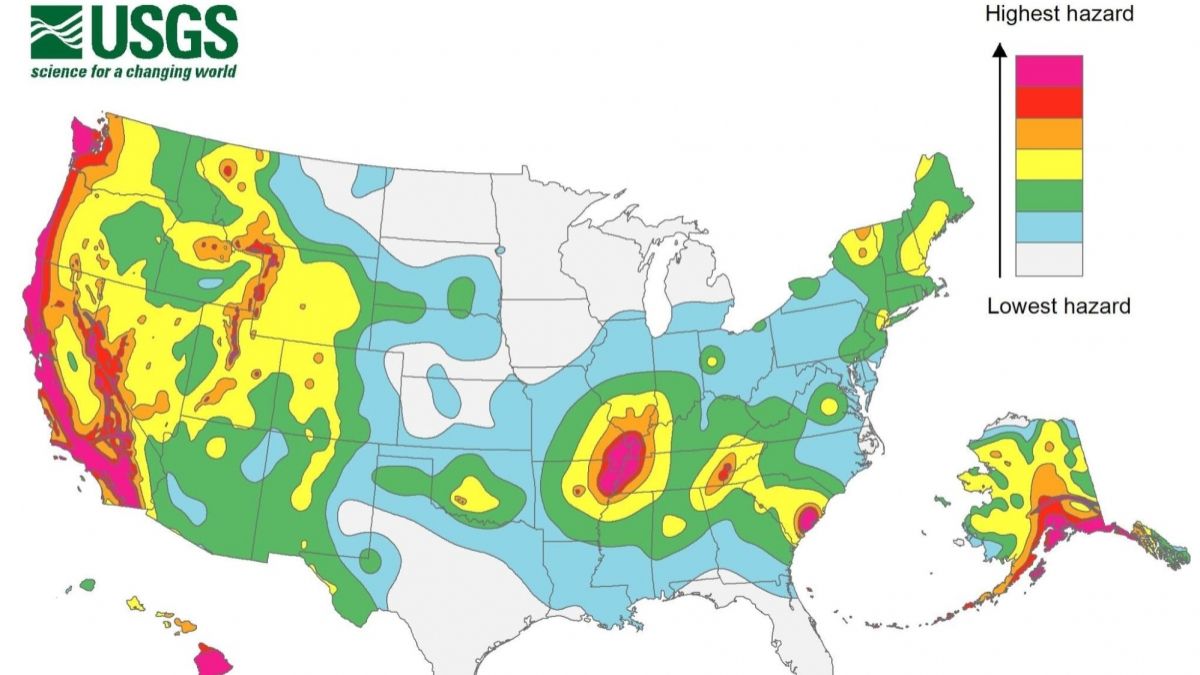 Image credits - Michigan Technological University
Image credits - Michigan Technological University
Advertisement
Earthquakes are a common occurrence in the United States, especially in certain regions where tectonic plates are constantly shifting. While earthquakes can occur anywhere, some areas experience more frequent tremors due to their location along major fault lines or seismic zones. California, Alaska, and the Pacific Northwest are among the most earthquake-prone regions, and they have a history of significant seismic events that have shaped their response and preparedness strategies.
The areas where earthquakes occur most in U.S.
California, known for its position on the Pacific Ring of Fire, is the state most associated with earthquakes in the U.S. The San Andreas Fault, which runs through much of California, is one of the most infamous fault lines in the world. The state experiences thousands of small tremors every year, many of which go unnoticed.
However, there are also major quakes, like the 1906 San Francisco earthquake, which caused widespread destruction and loss of life, and the 1994 Northridge earthquake, which resulted in over 60 deaths and billions of dollars in damages. These events have made Californians acutely aware of the dangers of seismic activity, and the state has stringent earthquake preparedness protocols in place. Residents are encouraged to prepare emergency kits, secure heavy furniture, and be aware of evacuation routes in case of large tremors.
Alaska, though less discussed in the media, is the most seismically active state in the U.S. It accounts for more than half of the earthquakes recorded in the country each year. The state is located along the Pacific Ring of Fire, a region known for its high volcanic and seismic activity. In 1964, Alaska experienced the second-largest earthquake ever recorded, a magnitude 9.2 tremor that caused massive damage and triggered tsunamis. The Aleutian Islands and the Denali Fault are some of the most active seismic zones in the state. Alaska’s frequent quakes, while often small, serve as a reminder that the region is vulnerable to catastrophic seismic events at any time.
The Pacific Northwest, including areas of Oregon, Washington, and Northern California, is another hotspot for seismic activity. The Cascadia Subduction Zone, where the Juan de Fuca Plate is slowly sliding beneath the North American Plate, has the potential to produce a massive earthquake. While major quakes are rare, the region experiences regular minor tremors. The largest earthquake in recorded history in this region occurred in 1700, with a magnitude of 9.0, and it generated a devastating tsunami that affected the coasts of Japan and the U.S. West Coast. Scientists continue to monitor this fault, as the risk of a large-scale event remains high.
The New Madrid Seismic Zone, located in the central U.S., stretches across parts of Missouri, Arkansas, Tennessee, and Kentucky. While it doesn’t experience the same frequency of quakes as California or Alaska, the New Madrid zone has a history of powerful seismic events. In 1811-1812, a series of three major quakes, including one with an estimated magnitude of 8.0, shook the region, causing the Mississippi River to temporarily reverse its course and creating new lakes. Though there have been no significant earthquakes in the region in recent years, the area remains at risk, and experts warn that another large earthquake could occur at any time.
Residents of these earthquake-prone areas are encouraged to stay informed about seismic activity and prepare for the possibility of an earthquake. If you live in California, Alaska, the Pacific Northwest, or the New Madrid Seismic Zone, it’s essential to have a disaster plan in place, including knowing emergency contacts, securing your home, and having an emergency kit ready.
For those in need of earthquake preparedness resources or help, you can contact the American Red Cross at 1-800-RED-CROSS or visit their website at www.redcross.org. Additionally, the Federal Emergency Management Agency (FEMA) provides earthquake safety information and disaster response assistance at www.fema.gov or by calling 1-800-621-3362. It’s important to stay proactive and be prepared for seismic events, no matter where you live.
